S curve in Photography- How to Compose Using this Rule?
There are many ways to compose an image. When you are shooting outdoor, you will have to observe the different elements around you and decide on the right photo composition technique that will properly justify your image. The S curve photography composition technique is one such technique that helps to compose beautiful pictures.
In this guide, we will look at the S-curve photography technique in detail. You will learn how to use it, where to find it, and tips to enhance your S-curve compositions. Let us get started.
What is S-Curve in photography?
‘S-curve in photography is an image composition technique for photographers. According to this rule, the S-curve in a scene helps draw the viewer’s attention to the image. It acts as a guideline connecting the viewer to the subject, thereby making the picture meaningful. In addition, it helps to make the image dynamic. Landscape photographers employ this photo composition method in many of their frames.
The curve need not be precisely in the S- shape. It can also be a mirror image of the letter “S.” It is not mandatory that the curve leads to a subject. The curve can also act as a divider in the frame, making the scene more interesting.
Why S-Curve is a Powerful Photo Composition Technique? 😎
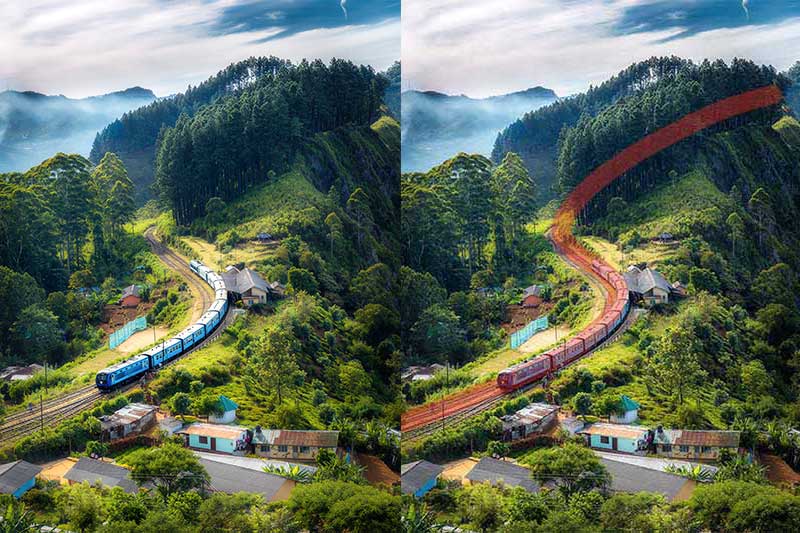
As a photographer, you can use any photo compositional rules to frame your scene. So, let us see how the S-curve photography technique helps to create a powerful composition.
The above image is an excellent example of photo composition using this technique. Here, the rail track and some of the trees form the S-shape, and the train in the rail is the main subject. You can also see the houses on either side of the rail, surrounded by trees in the forest. Thus, the viewer’s attention is quickly drawn to the image.
S-Curve Vs Leading Lines 😎
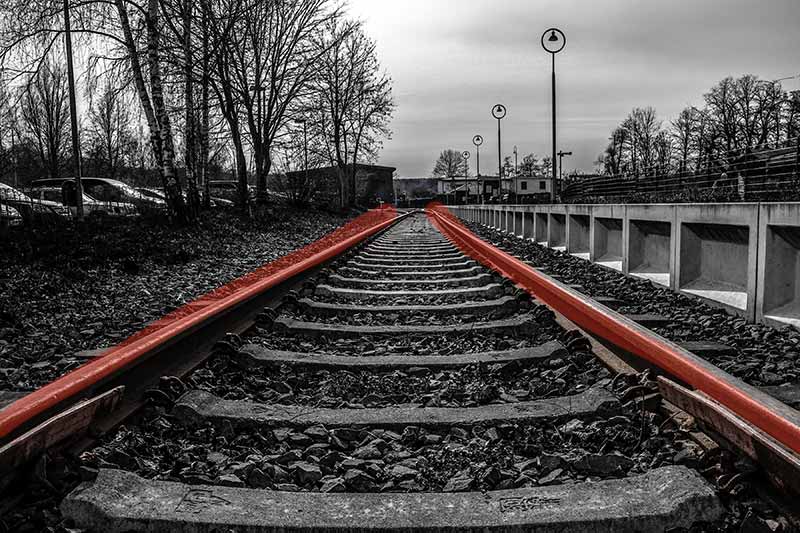
When it comes to the leading lines photography technique, the lines that guide the viewer to the image will be straight. But, in the case of the S-curve, it is the curve that leads the viewer into the picture. It is the main difference.
These composition techniques are really powerful if used in the right way for the appropriate scenes.
S-Curve Vs Curves in Photography 😇
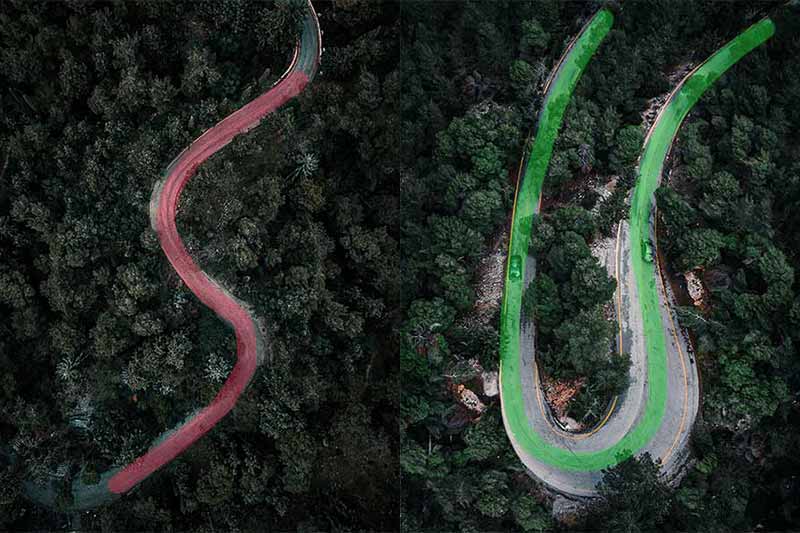
You can use both S-curve as well as curves to compose your image. It is easy to find curves in a scene when compared with S-curves. The C-curve is the commonly used framing technique when it comes to curves.
If you do not include the full S in your frame, then it will result in a picture that follows composition using curves. So, it is up to the photographer to decide whether to go with the curve or the s-curve when the scene has both shapes.
How to Find S Curve Compositions? 🏞
If you are a beginner in photography, you may find it difficult to notice the S curves around you that you can use for composing your images. I will share some of the S curve patterns that you can easily find when you do photography next time.
Road & Pathways
It is pretty easy to find an s-curve path on roads or pathways. The road will never be straight. It will have lots of curves in it.
There will be many repeating s curves in a long pathway or road if you observe closely. This repeating behavior makes life easy for the photographer. You can use any of the S-curves to get your desired shot. Many landscape photographers use this technique in their images.
Rail
Rails are another good place to try the s-curve photography composition technique. To make the picture with the rail more interesting, try to capture the scene when there is a train on the rail track. Please make sure that you are shooting this from a safe place and not standing on the rails.
Lake/ Water Body
If you are outdoor photographing landscapes, look for lakes or other water bodies with an S shape structure. If it is a sunset or sunrise shot, try to get the sun at the end of this s-shaped water body. The water body will act as the leading curve to the sun, which is the main subject of the scene.
Building Structures
If you are into architecture photography, you might be able to find interesting s-curve in different structures. It can be in the interior or exterior of the building. Sometimes, the arrangement of pillars or blocks in the structure makes the s-curve pattern.
Sand Dunes
If your photoshoot location is a desert, you can find lots of sand dunes. Try to find a good S-curve pattern in these sand dunes. You can ask your model (subject) to stand at the end or starting of the curve, and it will help make your frame beautiful.
Branches in Tree
When you photograph a scene with branches of trees as one of the main elements, you can try to see if there are any S-curves made by any of the tree branches. If any, try to use it.
For example, if there is a bird perched on a branch, you can try to get the S-curve of the branch as the leading path to the bird (subject). It will make the frame really interesting for the viewer.
6 Tips to Capture Beautiful S-curves 🚀
1. Use Drones
You may not be able to see the full S-curve in some places because of the lack of full visibility due to trees or buildings. But, shooting from a different perspective may help you see the curve properly.
A top view angle or the birds-eye view angle is one perspective that will help you see the curve properly. Here, you need to use a drone for photography. Make sure that drones are allowed in that area to avoid unnecessary troubles. You can also get a similar view when you shoot from a helicopter or if you stand in top of a mountain and point your camera down.
2. Flat lay photography with an S-curve pattern

When shooting flat lay images, you can apply this composition rule. In the case of flat lay photography, the placement of elements is under your control. So, you can position your main element and the supporting props in an S pattern to follow this style.
3. Try to Place Important Elements along the S-curve
One of the main mistakes made by amateur photographers when using this rule is that they will only try to place their main subject either at the end of the curve or the start of the curve.
But you can make the image more powerful by adding elements along the S-curve. You need to ensure that the other elements in the curve show some relation with the subject. Otherwise, it will be meaningless.
4. Female Portraits

S-curve photography is not restricted to landscape or architecture photography alone. You can use it on other types of photography also. This composition technique can be applied to people photography, especially for fashion shoots of female models. You can make the model pose in an S pattern.
To get this posture, make the model pose with the hip pushed back, standing with one leg behind, and leaning back. This way, the model will be in S-shape. It can make a great picture if you complement it with a great outfit for the model with a matching background. You can also go for a ponytail hairstyle to get a better “S” shape
5. Need not be Continuous
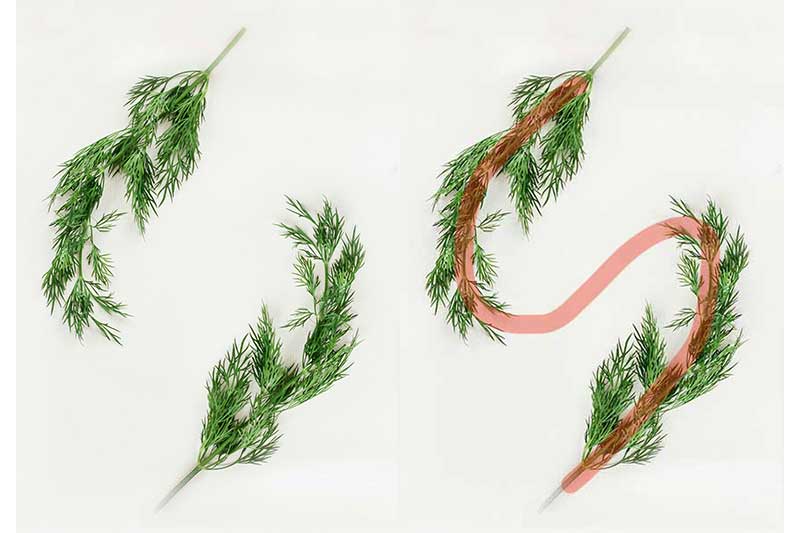
The S-curve in the frame need not be a continuous one. You will get a continuous one if it is a road, rive, pathway, or rail. Sometimes, it will not be a continuous one. There will be single or multiple breaks in between. But, when you view the scene, you will see the S shape formed by these elements that are arranged in the S shape.
When you look at the above flat lay image of the two plant stems, you can see that there is an invisible line connecting the two top ends of the stems. It completes the “S” shape
6. Long Exposure Light trails with vehicles on the road at night
You can apply this technique when you are shooting light trails of automobiles on the road at night. Choose a road or pathway that is in S-shape for your image.
When you do long exposure for such a scene, you will get multiple S lines made by the light from the vehicles on the S-shaped track. The light streaks will be in shades of red and orange.

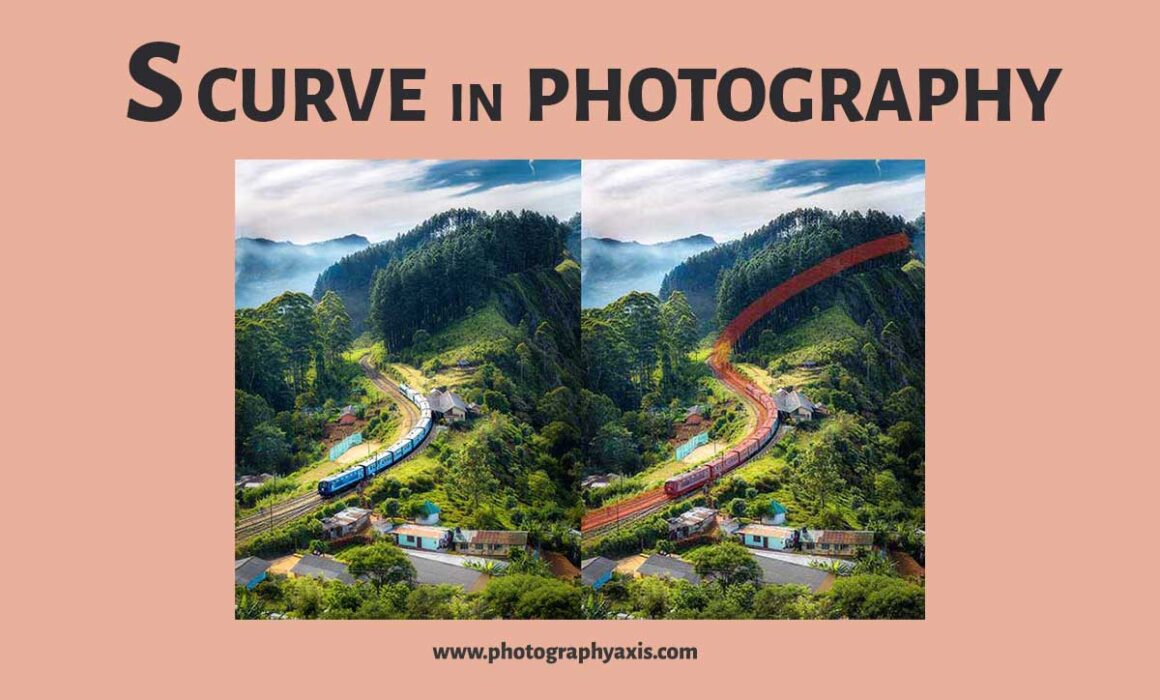
Good write up !!